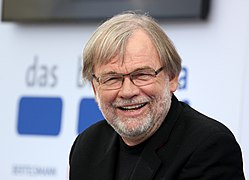Design
Design
Personality
Chart Properties
Your Cross represents the specific theme of your life. This cross embodies your unique potential & the lessons you're here to learn, providing a roadmap to fulfilling your life purpose.
We use the UTC birth time and date to do the calculations required to generate your Human Design chart.
Buy Tokens
Pay as you use, no expiry and no subscription required.Prompt Ideas
Get inspired with some epic prompt ideas.Cornelis Zwikker's Biography
Dutch professor of theoretical and applied physics.
He was the son of Klaas Zwikker (14 December 1870, Westzaan – 3 August 1940, Zaandam) and Klaartje Dil (29 December 1870, Oostzaan – 22 October 1946, Eindhoven).
In 1918 he initially studied Chemistry at the University of Amsterdam (UvA), later Mathematics and Physics under Pieter Zeeman (till 1927). He considered graduating on Theoretical Physics under Zeeman, but he knew that this took his predecessors typically seven years.
From 1923 to 1929 he worked as a research assistant at the Phillips Natuurkundig Laboratorium (Natlab) in Eindhoven under Gilles Horst (Haarlem, 20 maart 1886 – 11 Octobre 1968, Waalre). Holst, once an assistant of Heike Kamerlingh Onnes, promoted on “Les propriétés thermiques de l’ammoniaque et du chlorure de méthyle” in Zürich ., became in 1914 the first director of Natlab and had like Zwikker a sharp eye for the applications in practice of theoretical physical science. Or just more the engineering and practical doing side of natural science.
Zwikker graduated on 24 June 1925 3 PM at the UvA with a thesis entitled “Physische eigenschappen van wolfraam bij hooge temperaturen” (Properties of Tungsten at high temperatures). Tungsten was used in the incandescent light bulbs made by the Phillips gloeilampenfabriek in Eindhoven .
In 1929 Zwikker was appointed professor of Theoretical and Applied Physics at the Technical University of Delft. The acoustic design of many buildings, including the studios of the AVRO Radio, were done by him and his students like the Acoustics engineer and professor Piet de Lange (1921 – 1999). They tried to keep the reverberation times low (echo <2 seconds), even in large rooms - where the sound waves of course must travel longer distances - to enable the clear appreciation of human speech and music. The design of the for their "intimate" sounding acoustics, famous, large Music Halls like: the "Boston Symphony Hall"; the "Concertgebouw" in Amsterdam and the "Goldener Saal" of the Wiener Musikverein were there great miraculous architectural examples.
Prof. Zwikker held many major positions: Chairman of the Dutch Physical Society and the Dutch Physicist Council, Secretary of the Dutch Society for Illumination, Secretary and co-founder of the Sound Foundation and editor of the Dutch Magazine for Physics. He was appointed a member of The Batavian Society; The Utrecht Province Society; The Amsterdam Society for Nature, Medicine and Surgery and was extraordinary member of the Patent Office. In 1945 he asked to resigned and accepted the position of Technical Director of the Light Group NV Philips in Eindhoven. From 1956 to 1970 he held the position of professor again but now at the Technical University in Eindhoven. He advised the Dutch government on the illumination of roads.
He died died 20 April 20 1985 in Zwijndrecht.
Personal
He married on 17 April 1924 in Zaandam Johanna Dorothea Theinert (9 Jan 1901, Zaandam - 31 March 1984, Eindhoven).
In his spare time he studied music and archeology.
Cornelis Zwikker
Your Cross represents the specific theme of your life. This cross embodies your unique potential & the lessons you're here to learn, providing a roadmap to fulfilling your life purpose.
We use the UTC birth time and date to do the calculations required to generate your Human Design chart.







